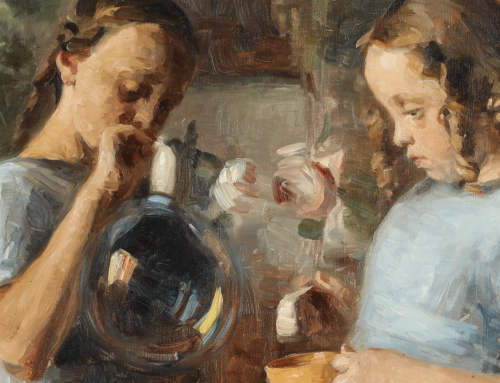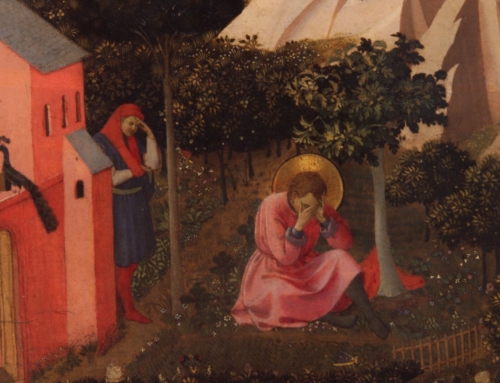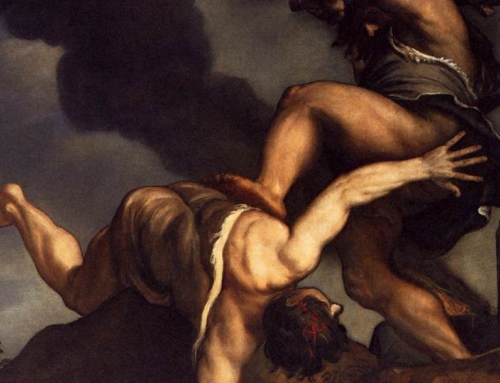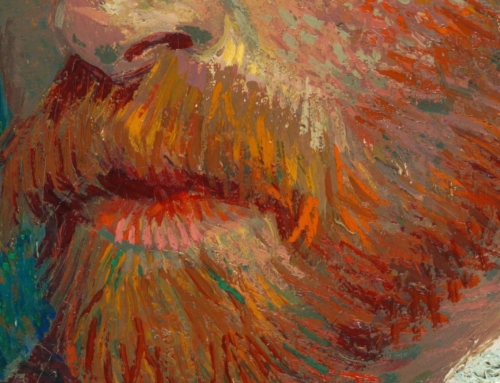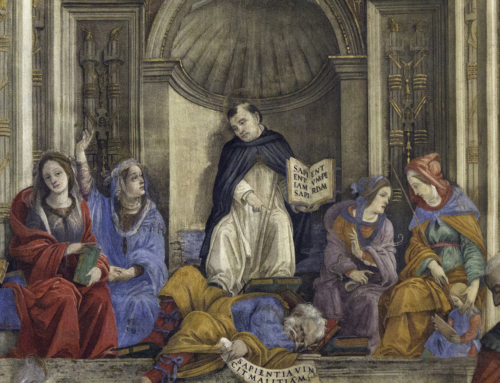This is part of a series entitled, “One-Line Wonders.” Read the series introduction here. To see other posts in the series, click here.
“Thy face, Lord, do I seek.” (Ps 27:8)
C.S. Lewis famously observed that friends stand shoulder-to-shoulder pursuing a common goal. But with Christ, our “truest and best friend,” as Aquinas says, we stand looking face-to-face, for he is the common goal of all things. The prayer of the Psalmist, “thy face, Lord, do I seek” (Ps 27:8), expresses man’s desire for friendship with God, made possible through the Incarnation and developed throughout each person’s lifetime.
The face can reveal the thoughts, feelings, and identity of the inner man. Cicero, the greatest Roman orator, wrote that “the countenance is the image of the mind, and the eyes are its interpreters” (De Oratore). Our friends reveal to us who they truly are in great part through their faces. With our friends we are at ease, allowing our faces to reveal our thoughts. Friends must be true to each other since all friendship is based on sharing.
While the face often reveals the true intent and feelings of the person, it can also sometimes shroud the interior man. The power of facial eloquence can be abused as it is by Macbeth, for example, who hides his true intent from King Duncan whom he plans to murder in his sleep. To effect his grim intent, Macbeth knows that “false face must hide what false heart doth know” (Macbeth, I, 7). Conversely, the honest heart will be manifest in an honest face. True friends reveal their true selves, while a false friend hides his true self.
Since friendship is necessarily based on things shared in common, Aristotle simply assumed that friendship with God was impossible. After all, what does man really have in common with God? Yet, through faith in revelation, we know that God became man so that men could become like God. In other words, the Incarnation provided a certain commonality that could serve as the basis of a friendship between man and God. In a “wondrous exchange” Christ took on human nature and, in return, gave to man grace, which is a participation in his own divine life. In the Incarnation, Christ made himself our friend by taking on a human face. It is through his incarnate face that Christ reveals to man his inner Divine Person. At the meal with his disciples in the upper room, Christ said, “no longer do I call you servants, for the servant does not know what his master is doing; but I have called you friends, for all that I have heard from my Father I have made known to you” (John 15:15). Christ shares all because he shares his very self.
But friendship is a two-way street. For friendship to exist between man and God, it is not sufficient that God reveal himself to man —man must also reveal himself to God. Of course, since God sees all things, all talk of man “hiding” from God can only express the reality that men can shun God’s influence in their lives. Revealing ourselves to God, therefore, means that no aspect of our lives lacks reference to God. When we see good in our soul, we give thanks and praise to God: “my soul magnifies the Lord” (Luke 1:46). And when we see sin in our soul, then we ask for mercy, revealing all to God who alone can heal us: “teach me wisdom in my secret heart.” (Ps 51:6). God alone can turn our hearts from vice to virtue, for he is “the Lord who shapes the hearts of them all” (Ps 33:15). Revealing our hearts to Christ means that all our thoughts, words, and actions are open to his influence.
Everything in our lives, then, is an opportunity to grow in friendship with Christ. The saintly writer Archbishop Luis Martínez compared our friendship with Jesus to a good wine, improving with age. The best wines have a flavor that results from the long maturation of the combination of sweet fruit and bitter tannin. The fullest friendship with Christ matures at all times—the sweet times and the bitter, the good and the bad. If we join Christ in draining to the dregs the cup which he offers us, then we can be his true friends.
Friendship with Christ will only become perfect when we reach heaven where we will see him face to face. This life is a search for the face of God, since “now we see through a glass, darkly; but then face to face: now I know in part; but then shall I know even as also I am known” (1 Cor 13:12). Even in the Eucharist where Christ is really present, we look forward to that time when we will have the vision of both the visible human face of Christ and the invisible Godhead. We can join Saint Thomas in his Adoro Te which closes with this petition: “Jesus, whom now I behold under a veil, I pray that that for which I so thirst may come to pass: that, looking intently upon thy unveiled face, I may be blessed with the sight of thy glory.”
✠
Image: Unknown 6th century artist, Christ Pantocrator


